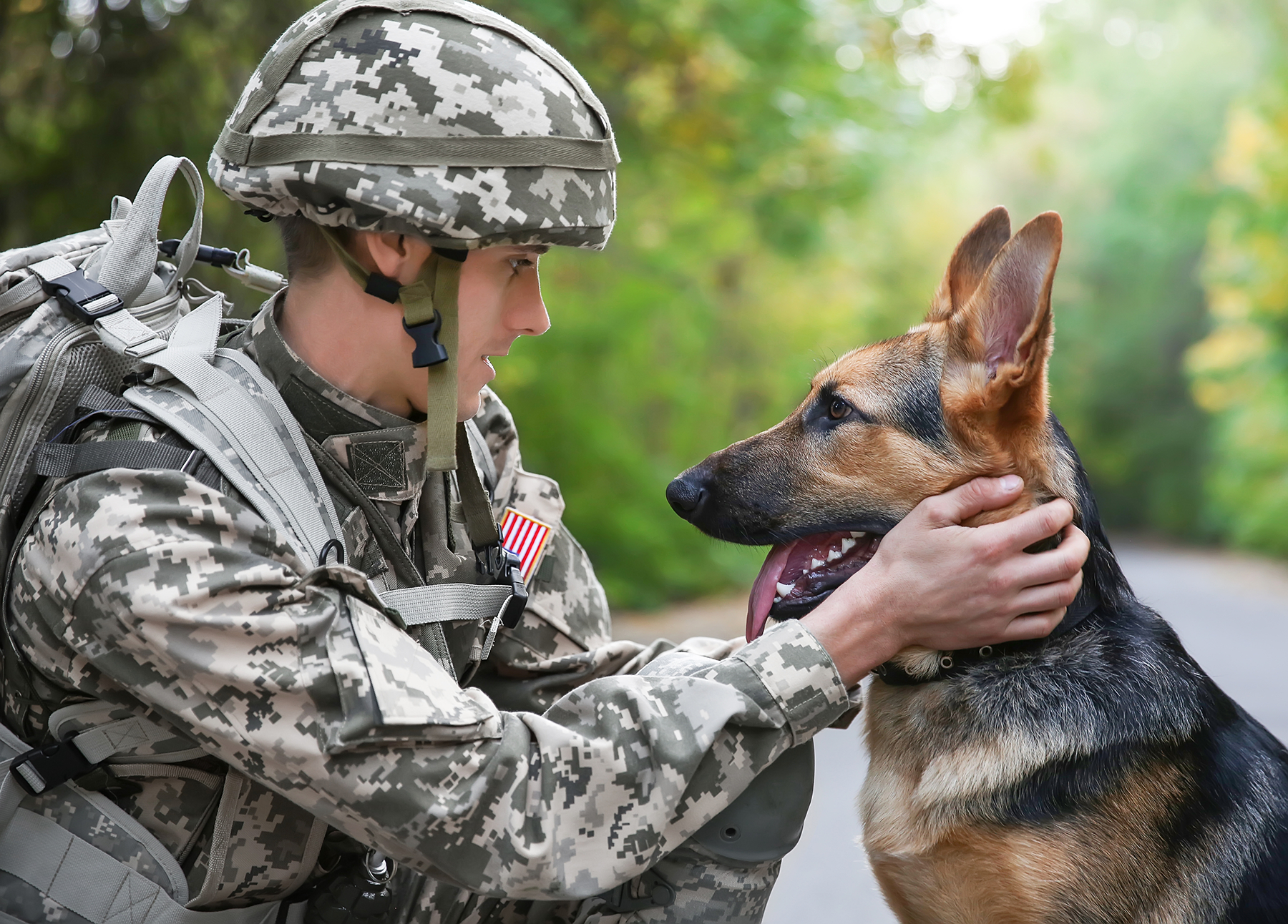Military Dogs
Military forces have used dogs in warfare for thousands of years since mid-7th century. At the Battle of Pelusium dogs were and other animals were placed on the front lines of the battle as a psychological tactic against the Egyptians taking advantage of their religious reverence for animals. In Viet Nam approximately 5000 “war dogs” served. It is estimated that more than 10,000 lives were saved as a result of military service dogs. While dog roles have changed military dogs remain a constant to protect, serve and save lives today.
Today, the armed forces military use highly trained dogs in much the same way a police officer uses a dog. Military dogs may be used to track, or as sentries, or scouts, and for search and rescue. Military and Sniffer dogs are not service animals and have no special protections. While these dogs may be highly trained, they are not necessarily trained for public interaction, and their training is specific to their job, and very different than that of a service dog. The movie below describes some the K9 Military training for dog and handler in the service of our country.
Military Dogs Text Transcript
Military Dogs Audio File
Traditionally, the most common breed for this type of work was the German Shepard; More recently some smaller dogs with a keen sense of smell has been enlisted detection work some other breeds that are considered to be resilient include Belgian Malinois and Dutch Shepherds. These military working dogs are paired with a single handler after their training. The following links provide information about war dog memorials.
Links to Memorials Honoring Military Dogs
- The March Field Air Museum in Riverside, California
- The The Fort Benning, Georgia Infantry School
- The War Dog Memorial, Guam
- The War Dog Memorial at the School of Veterinary Medicine in Knoxville, TN
- The Pennsylvania War Dog Memorial
- The USS Alabama War Dog Memorial
Dogs are versatile and loyal officers. They can chase suspects, track them if they are hidden, and guard them when they are caught. They are trained to respond viciously if their handler is attacked, and otherwise not to react at all unless they are commanded to do so by their handler. But remember, these heroes are trained for protection and other specific jobs. K9 Military Working Dogs are not trained to interact with the general public. These teams are not trained for public access like a service dog is trained.
